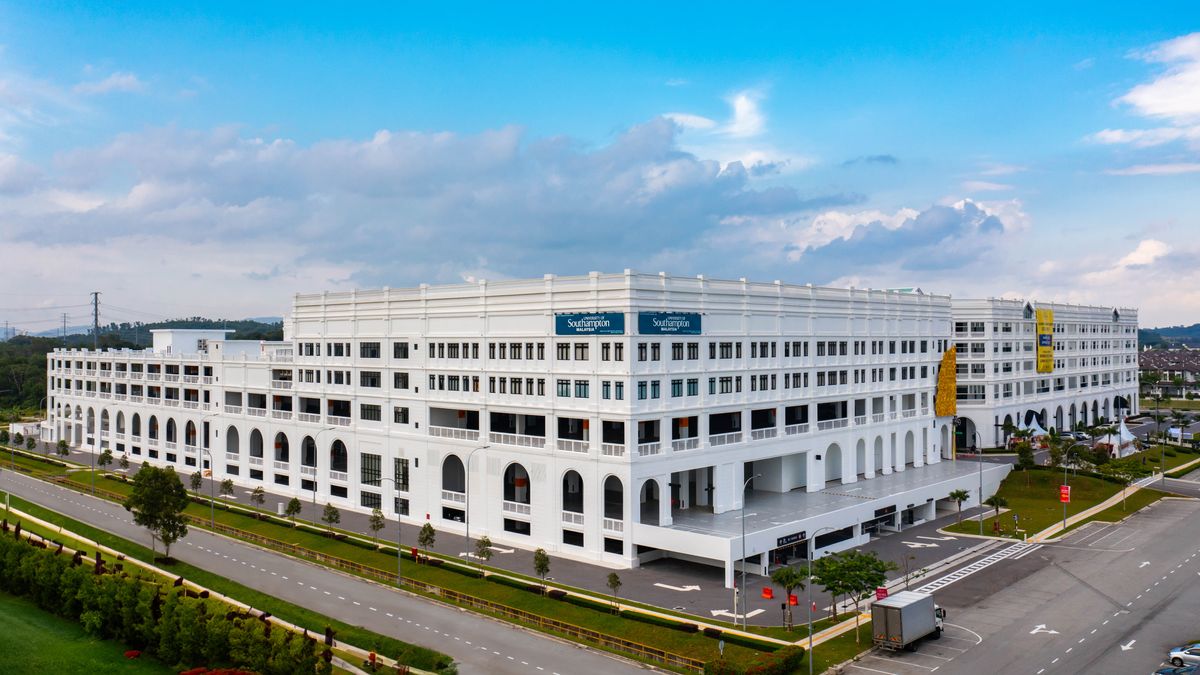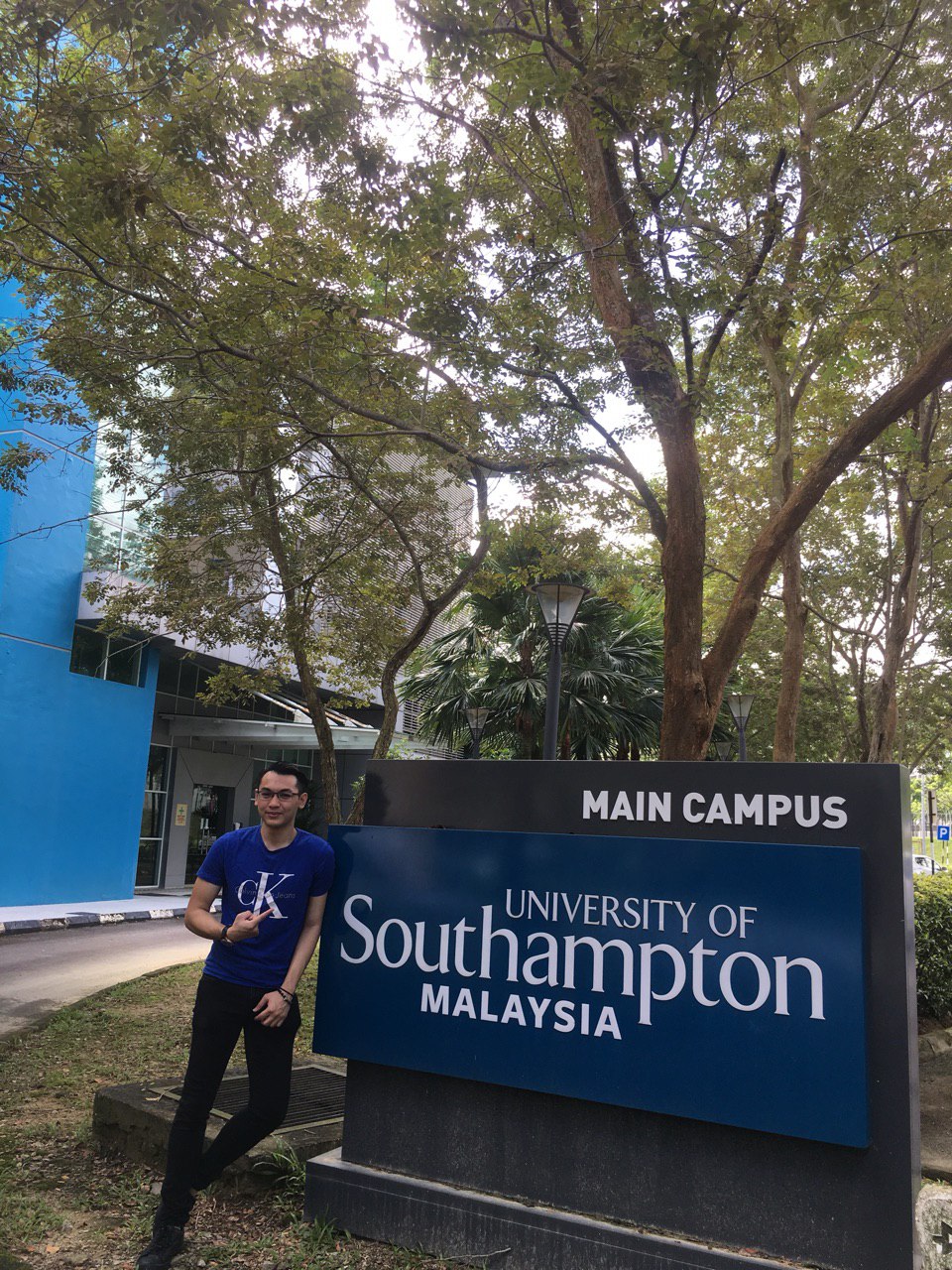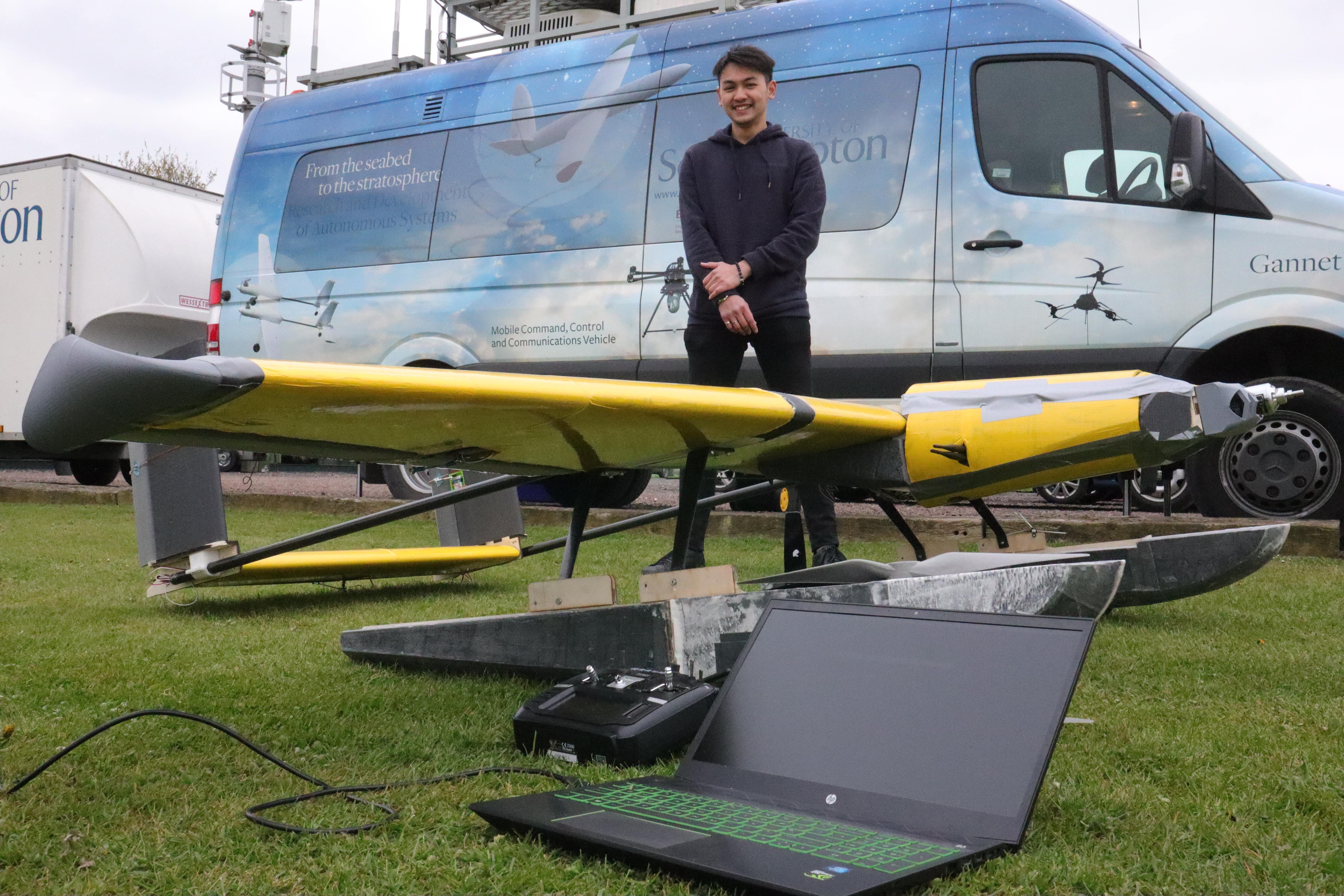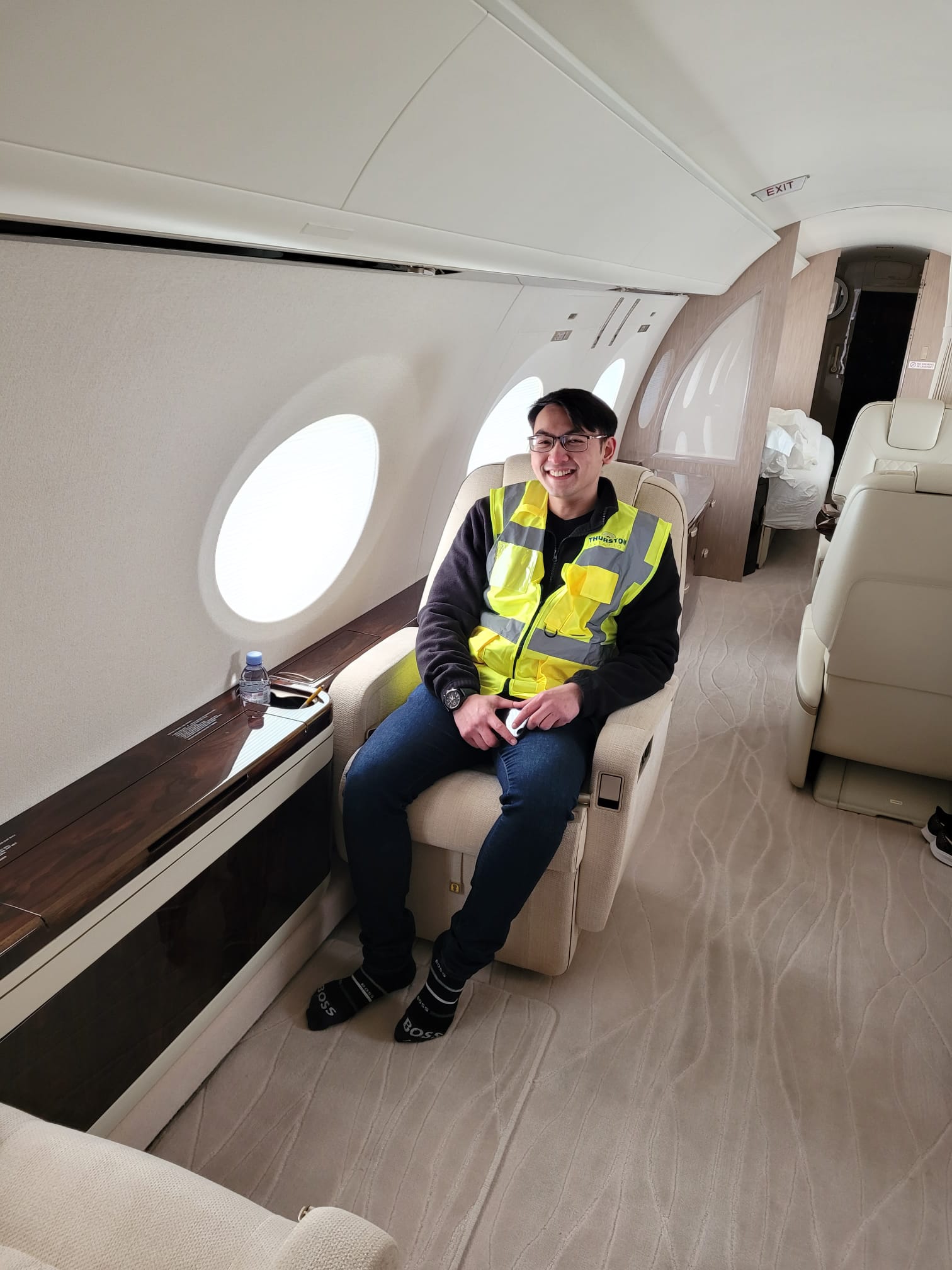Studying Aeronautical Engineering in Malaysia: Every Pathway You Need to Know

Munirah Ahmad Niza
October 29, 2025
Your curiosity could take flight, literally. Learn how to study aeronautical engineering in Malaysia and beyond!
Aeronautical engineering focuses on designing and testing aircraft that operate within Earth’s atmosphere.
It’s a growing field as Malaysia strengthens its aerospace and aviation industries.
Currently, University of Southampton Malaysia (UoSM) is the only institution offering a direct Aeronautics & Astronautics Engineering degree through a 2+2 UK pathway.
Aeroplanes are one of the world’s biggest mysteries. They’re huge, heavy and don’t flap their wings like birds, yet they glide through the air so smoothly.
Ever found yourself asking, “How does that thing even fly???”

The answer lies in the science of flight, a field that combines physics, design and engineering to make something so impossible-looking, actually possible!
That’s where aeronautical engineering comes in. The discipline dives deep into how aircraft are built and how they perform (fly).
From designing strong yet lightweight structures to creating engines that generate powerful thrust, aeronautical engineers turn theory into flight.
If you’ve ever been fascinated by this, then aeronautical engineering might be your runway.
👉 Learn more about navigating your academic journey, career paths and more in our Course Guide!
In this article, we’ll cover:
- Why you should study aeronautical engineering
- Study pathways in Malaysia
- Accreditation and licensing
__
Why You Should Study Aeronautical Engineering
The answer is simple: It's in high demand! In Malaysia, the growing need for skilled aeronautical engineers is evident, especially with the country set to purchase up to 60 Boeing aircraft from the United States as part of a new trade deal during the 47th ASEAN Summit in October 2025.
Here are a few other reasons:
- Air travel is booming: By 2037, passenger numbers will double to 8.2 billion worldwide (IATA).
- A career with plenty of lift: The sector is projected to generate 32,000+ high-skilled jobs (Malaysia Aerospace Industry Blueprint 2030)
- The world needs more planes: Boeing predicts airlines will require 43,610 new aircraft over the next 20 years.

Top Specialisations in the Industry
Once you graduate, you won’t just be an “engineer”. Aeronautical engineering offers plenty of exciting specialisations depending on your goals and interests, like:
- Aircraft design & development
- Propulsion systems
- Aerodynamics
- Avionics and control systems
- Maintenance, repair and overhaul (MRO)
- Sustainability and green aviation
__
Main Study Pathway In Malaysia
Before you fasten your seatbelt and take off on this academic journey, here’s the reality check: your options for studying pure aeronautical engineering in Malaysia are limited.
Currently, no local private university offers a full, standalone Aeronautical Engineering degree.
Some institutions provide Mechanical or Aerospace Engineering programmes with aeronautical electives, but if you want the real deal, there’s just one direct pathway.
1. Foreign Branch Campuses in Malaysia
This is the smoothest takeoff to a direct Aeronautical Engineering degree in Malaysia.
University of Southampton Malaysia (UoSM) - Master of Engineering in Aeronautics & Astronautics (2+2)

Here’s why it stands out:
- 2+2 Study Model: Start your first 2 years in Malaysia, then complete your final 2 years in the UK.
- Global Recognition: Graduate with a UK degree, ranked among the world’s best.
- Cost Savings: Save up to 40% of tuition fees studying in Malaysia while receiving the same teaching quality and content as in the UK.
- World-Class Ranking: Top 2 in the UK for Aeronautics & Astronautics (Complete University Guide 2026).
- Professional Accreditation: Accredited by the Royal Aeronautical Society and Institution of Mechanical Engineers, and recognised by the Board of Engineers Malaysia (BEM).
__
Alumni Experience
To understand what it’s really like to study this course, we spoke to UoSM alumnus Hafiz Amani, now a Technical Services Engineer at Thurston Aviation Ltd, about his academic journey and how it propelled his career in the aerospace industry!

“I have always been fascinated by the mechanics of flight and the way aircraft are able to lift off and travel vast distances,” he shared. This curiosity is what led him to study aeronautical engineering, a field that blends physics, mathematics and creativity.
For Hafiz, the 2+2 pathway was a key factor in his decision to choose UoSM.
“It allowed me to begin my studies in Malaysia before completing the final two years in the UK, a pathway that offered a supportive start with smaller classes and personalised guidance, followed by world-class engineering exposure in the UK,” he said.
“Plus, it made a UK degree much more affordable,” he added.
At UoSM, hands-on experience played a crucial role in his learning.
“The environment was collaborative and very industry-relevant. We had access to well-equipped fabrication workshops where we could prototype designs, assemble components and test physical models.

This hands-on approach truly embodies UoSM’s learning-by-doing philosophy, bridging the gap between theory and real-world engineering practice.”
Moving from Malaysia to the UK was a big step, but one UoSM prepared him well for. “The teaching style, curriculum, and assessments closely mirrored those in the UK, which helped me adapt easily to the academic expectations there.”
Equally important was the personal growth he experienced. UoSM encouraged independence, critical thinking, and cultural adaptability to facilitate a smoother transition.
Reflecting on his time abroad, Hafiz notes how studying in the UK reshaped his perspective.
“In Malaysia, learning is more structured. In the UK, it’s about independent learning and applying knowledge to real-world contexts. You’re encouraged to question, explore and think critically,” he explained.
Most importantly, UoSM’s rigorous training directly shaped Hafiz’s current role.
“My Master’s degree gave me the technical foundation and problem-solving skills I use daily as a Technical Services Engineer in a Continuing Airworthiness Management Organisation (CAMO). It’s about ensuring aircraft safety and reliability, and my studies trained me for that level of precision.”

As advice for aspiring students, Hafiz shares an encouraging message:
“Don’t be intimidated by the subject. If you’re curious about how things fly, eager to understand the science behind it, and willing to put in the effort, aeronautical engineering can be an incredibly fulfilling pathway that opens doors to many industries, not just aviation.”
__
Accreditation and Licensing
Accreditation is your “boarding pass” into the profession. In Malaysia, engineering programmes must be accredited by the Engineering Accreditation Council (EAC) under BEM.
Graduates from accredited programmes can then register as Graduate Engineers, the first step toward becoming a Professional Engineer (Ir.).
__
Final notes
Think of aeronautical engineers as the pilots behind the scenes; they don’t fly planes, but they make sure aircraft can.

So the next time you’re on a plane, looking out the window and watching the clouds roll by…remember, it’s aeronautical engineers who made that view possible. ✈️☁️



